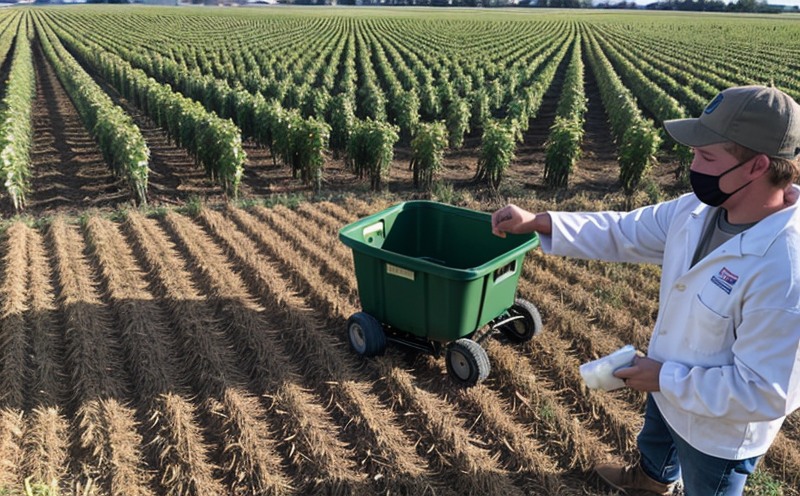Transport Simulation Testing (Vibration, Compression)
In the dynamic world of agriculture and forestry, ensuring that harvested products are transported under optimal conditions is crucial for maintaining quality. Post-harvest testing plays a pivotal role in this process, especially when it comes to simulating transport scenarios such as vibration and compression. These tests help ensure that agricultural produce, including grains, fruits, vegetables, and forestry products like wood and sawn timber, can withstand the rigors of transportation without compromising their quality.
Transport simulation testing is a critical component in the supply chain management for agriculture and forestry sectors. The goal is to replicate real-world conditions that goods might encounter during transport to identify potential issues early on. By subjecting specimens to controlled environments that mimic actual transit, we can ensure product integrity, reduce waste, and enhance overall marketability.
For instance, in the case of grains like wheat or corn, these tests help determine how well the packaging materials will protect against shocks during shipment. Similarly, for perishable goods such as fruits and vegetables, understanding the effects of vibration is essential to prevent bruising or damage that could occur during transit.
The testing process involves subjecting samples to various levels of vibration and compression forces using specialized equipment designed to simulate different modes of transportation—whether it’s road, rail, sea, or air. This allows us to assess the resilience of packaging against external stressors like rough roads or harsh weather conditions.
One key aspect of transport simulation testing is preparing the specimens correctly before placing them into the test machines. Depending on the type of product being tested, this might involve cleaning, drying, and sometimes even conditioning the samples to simulate real-world storage conditions. Proper specimen preparation ensures accurate results that reflect realistic outcomes.
Once prepared, the samples are placed inside containers or crates designed to replicate actual shipping units. The chosen container must be representative of what would typically be used in commercial transport settings. After setup, the testing machine applies controlled amounts of vibration and compression force according to predefined protocols established by international standards such as ISO 16739:2020 for road transportation.
The data collected from these tests provides valuable insights into which aspects of packaging need improvement or reinforcement. For example, if certain areas show signs of deformation under simulated transport conditions, manufacturers can adjust their designs accordingly to improve durability and protect contents better.
Scope and Methodology
| Test Parameter | Description |
|---|---|
| Vibration Levels | Simulates the shaking experienced during road, rail, and air transport. |
| Compression Forces | Evaluates how well packaging withstands pressure from stacked goods or during handling. |
| Shock Duration | Determines the duration and intensity of impacts a product may experience during transit. |
Quality and Reliability Assurance
- Conforms to international standards such as ISO, ASTM, EN, and IEC.
- Uses state-of-the-art equipment calibrated to industry benchmarks.
- Pioneers in replicating real-world conditions with precision.
- Provides detailed reports based on comprehensive data analysis.
Competitive Advantage and Market Impact
Implementing transport simulation testing offers significant competitive advantages in the agriculture and forestry sectors. By identifying potential weaknesses early, businesses can enhance their product quality assurance processes, leading to higher customer satisfaction and loyalty.
Compliance with international standards ensures that products meet global regulatory requirements, opening up more markets for export-oriented companies. Additionally, this level of scrutiny helps reduce post-harvest losses by minimizing damage during transit, thereby increasing profitability.
Moreover, demonstrating robust quality control measures can build trust among buyers and stakeholders, which is particularly important in sectors where reputation plays a significant role such as organic farming or sustainable forestry practices. The ability to provide detailed reports also allows companies to communicate their commitment to excellence effectively.





